Chloé Chopin
Spintronics for image recognition : performance benchmarking via ultrafast data-driven simulations
Aug 10, 2023Abstract:We present a demonstration of image classification using a hardware-based echo-state network (ESN) that relies on spintronic nanostructures known as vortex-based spin-torque oscillators (STVOs). Our network is realized using a single STVO multiplexed in time. To circumvent the challenges associated with repeated experimental manipulation of such a nanostructured system, we employ an ultrafast data-driven simulation framework called the data-driven Thiele equation approach (DD-TEA) to simulate the STVO dynamics. We use this approach to efficiently develop, optimize and test an STVO-based ESN for image classification using the MNIST dataset. We showcase the versatility of our solution by successfully applying it to solve classification challenges with the EMNIST-letters and Fashion MNIST datasets. Through our simulations, we determine that within a large ESN the results obtained using the STVO dynamics as an activation function are comparable to the ones obtained with other conventional nonlinear activation functions like the reLU and the sigmoid. While achieving state-of-the-art accuracy levels on the MNIST dataset, our model's performance on EMNIST-letters and Fashion MNIST is lower due to the relative simplicity of the system architecture and the increased complexity of the tasks. We expect that the DD-TEA framework will enable the exploration of more specialized neural architectures, ultimately leading to improved classification accuracy. This approach also holds promise for investigating and developing dedicated learning rules to further enhance classification performance.
Neuromorphic spintronics simulated using an unconventional data-driven Thiele equation approach
Jul 18, 2023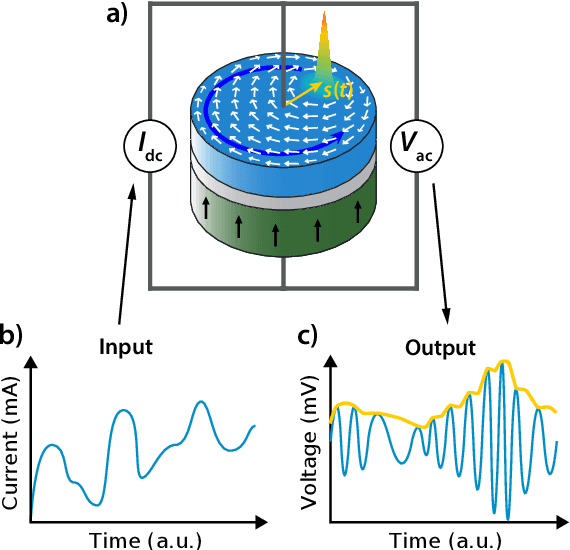
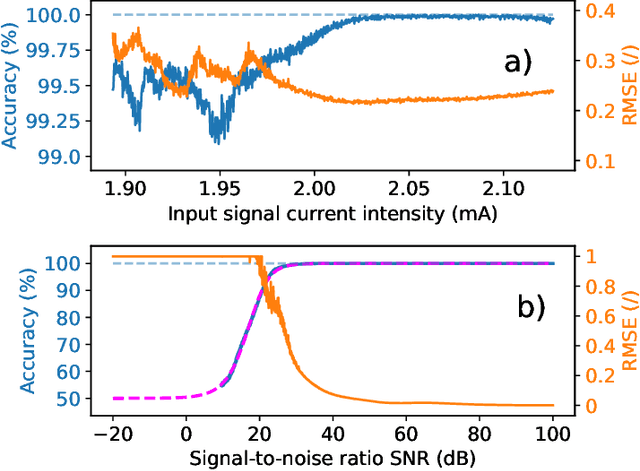
Abstract:In this study, we developed a quantitative description of the dynamics of spin-torque vortex nano-oscillators (STVOs) through an unconventional model based on the combination of the Thiele equation approach (TEA) and data from micromagnetic simulations (MMS). Solving the STVO dynamics with our analytical model allows to accelerate the simulations by 9 orders of magnitude compared to MMS while reaching the same level of accuracy. Here, we showcase our model by simulating a STVO-based neural network for solving a classification task. We assess its performance with respect to the input signal current intensity and the level of noise that might affect such a system. Our approach is promising for accelerating the design of STVO-based neuromorphic computing devices while decreasing drastically its computational cost.
Neuromorphic spintronics accelerated by an unconventional data-driven Thiele equation approach
Jan 26, 2023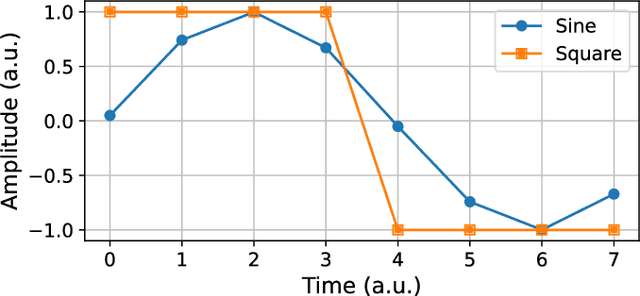
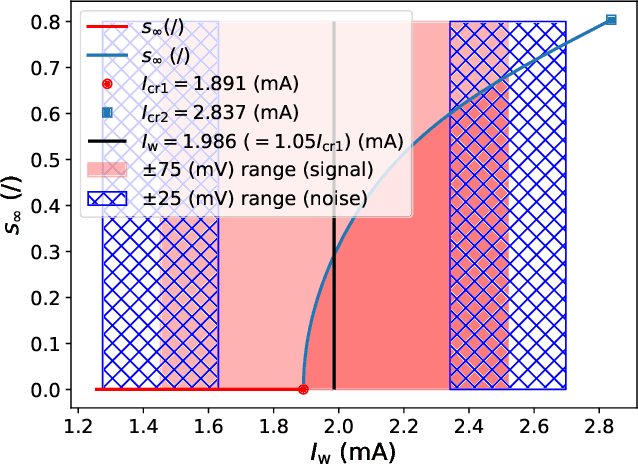
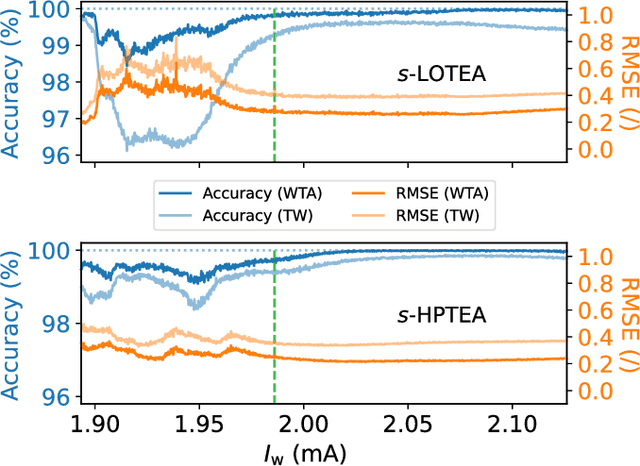
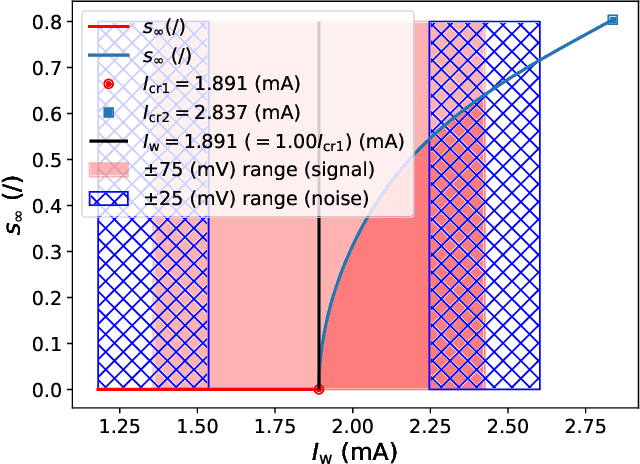
Abstract:A hardware neural network based on a single spin-torque vortex nano-oscillator is designed using time-multiplexing. The behavior of the spin-torque vortex nano-oscillator is simulated with an improved ultra-fast and quantitative model based on the Thiele equation approach. Different mathematical and numerical adaptations are brought to the model in order to increase the accuracy and the speed of the simulations. A benchmark task of waveform classification is designed to assess the performance of the neural network in the framework of reservoir computing and compare two different versions of the model. The obtained results allow to conclude on the ability of the system to effectively classify sine and square signals with high accuracy and low root-mean-square error, reflecting high confidence cognition. Given the high throughput of the simulations, two innovative parametric studies on the dc bias current intensity and the level of noise in the system are performed to demonstrate the value of our models. The efficiency of our system is also tested during speech recognition and shows the agreement between these models and the corresponding experimental measurements.
 Add to Chrome
Add to Chrome Add to Firefox
Add to Firefox Add to Edge
Add to Edge